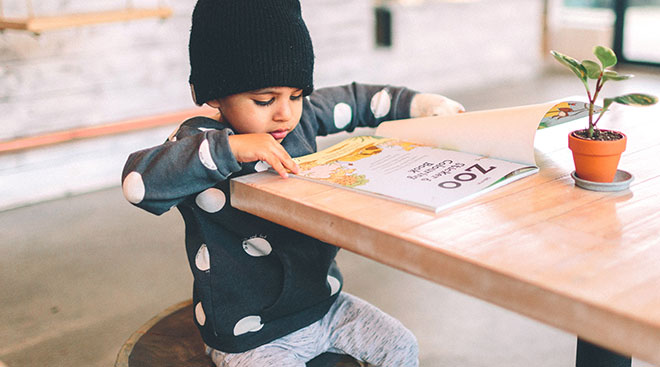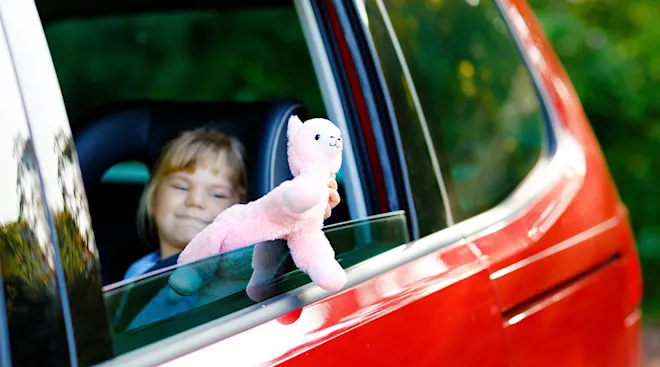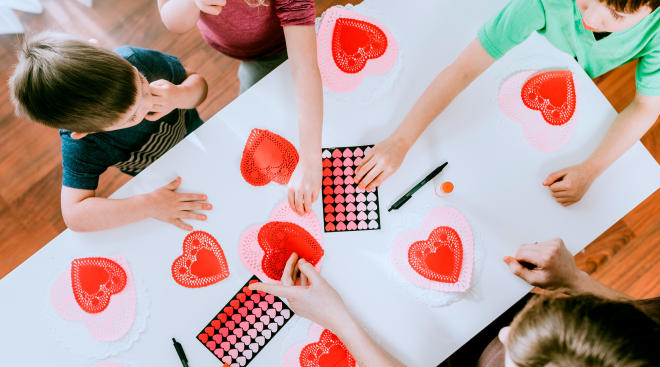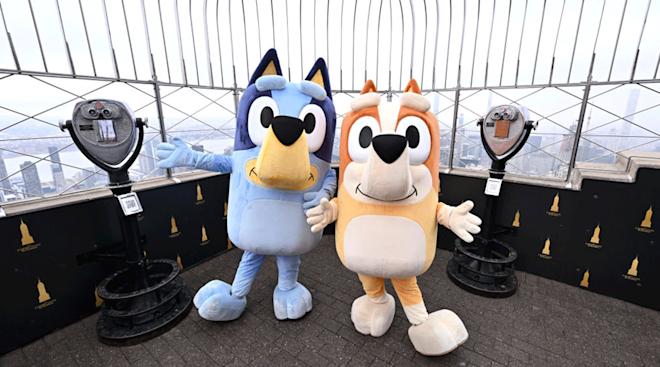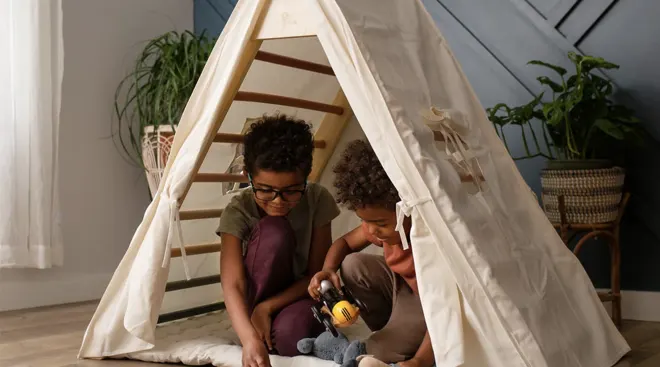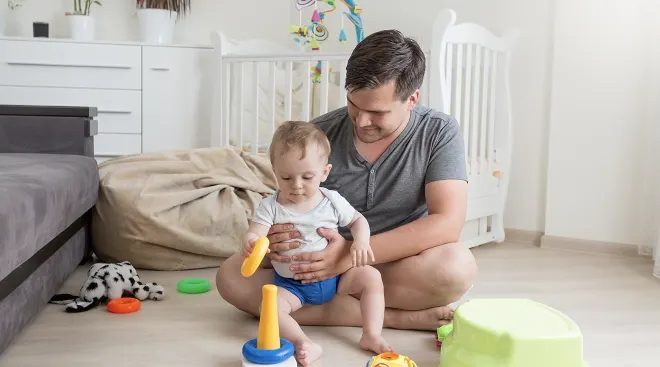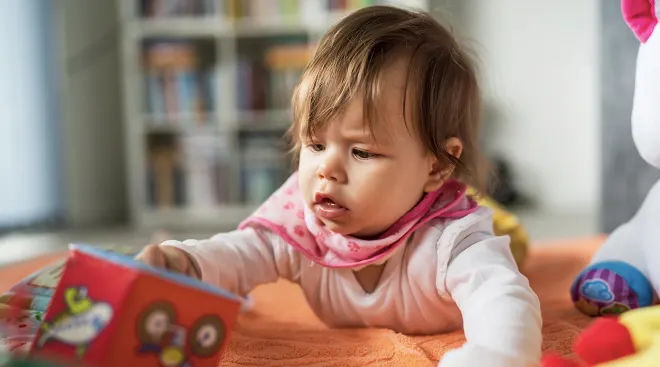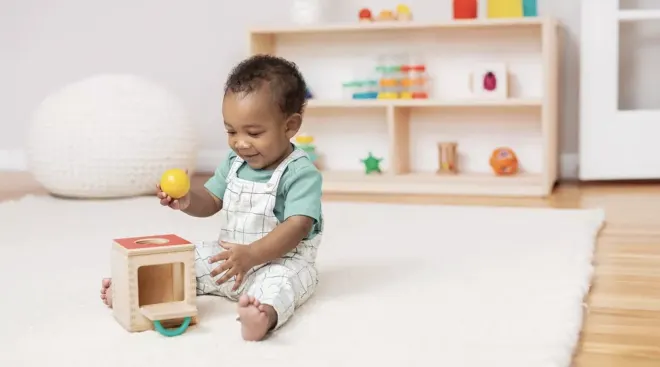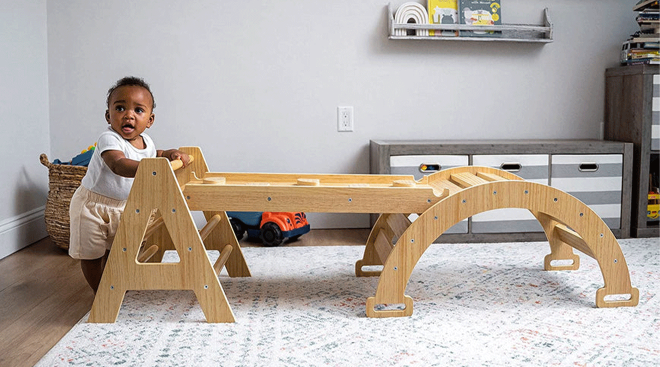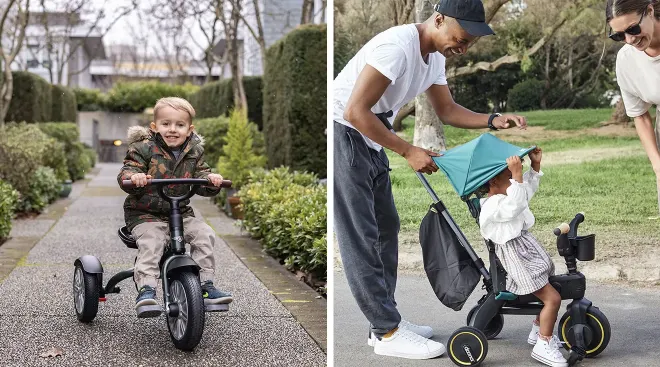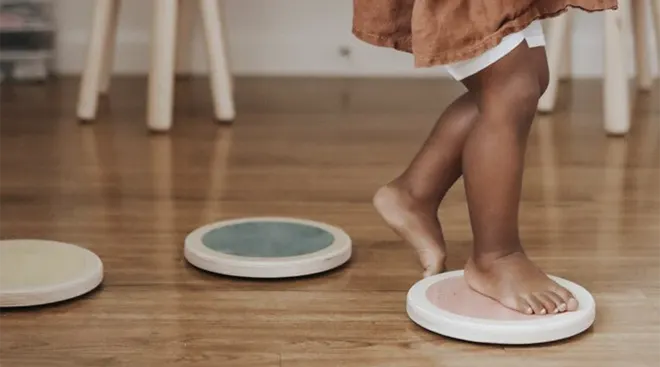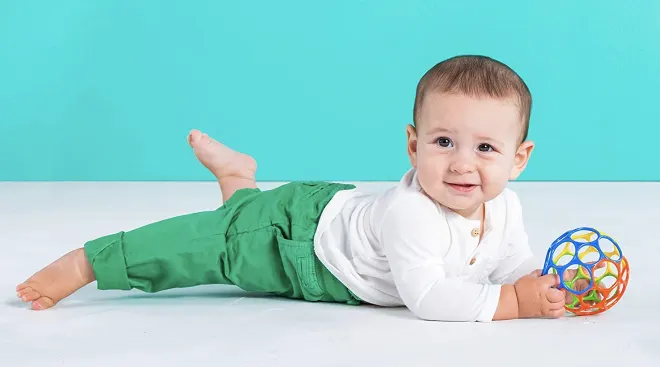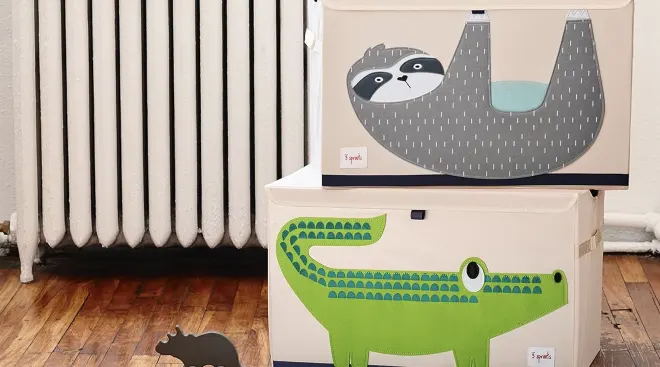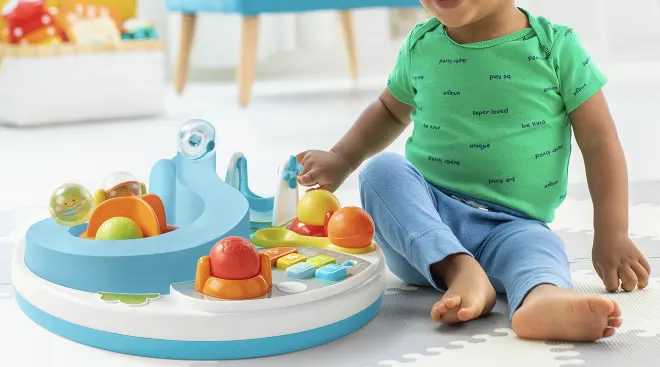7 Ways Montessori Promotes Independence (So Parents Can Work From Home)
With the challenges of parenting in a pandemic, many families have faced the reality of taking on two full time jobs. Working from home while caring for little ones is challenging at best. However, some key takeaways from the Montessori Method can help you and your child navigate your days with (some) ease. Specifically, curating your child’s environment for independent play is ideal for their development as they are able to make decisions, problem solve and achieve accomplishments all on their own. It also carves out some key moments for you to hop on a Zoom call, respond to emails, and tackle that never ending ‘To Do’ list.
Toys and materials on a low shelf at your child’s eye level provide an invitation to play independently. Low shelves can be found in many forms, like the bottom shelf of a bookcase or built in, or even a low cabinet with the door removed. Children like to be part of the community, so we recommend setting up your child’s play space near your work area if possible. Our Monti Kids Learning Team advises parents to include a curated collection of 6-8 toys, as well as a basket of 6-8 books. This will help your child focus on their play, rather than getting overwhelmed by the options.
Our Monti Kids Learning Team generally recommends rotating toys once a week. However, when working from home, you may notice that you’ll need to rotate them every few days now that we’re spending so much more time at home. Throughout the week you can take note of what toys or materials your little one engaged with. Then, at night or during a nap even, you could rotate out a few toys or books your child doesn’t seem to be using, and add in toys or books you have in storage. The forgotten materials will seem new again, providing fresh entertainment and learning opportunities as your child will approach them with new skills and fresh eyes.
You can create spaces for independence throughout your entire home. For example you can have a basket containing healthy snack options at your child’s height in your kitchen, or a water station where your child can help themself to a drink when they’re thirsty. Also, a step stool in the bathroom can be a game changer when it comes to washing hands or using the toilet. These spaces meet your child’s needs, while they grow in confidence and independence. Setting this up can be intimidating on the front end, but a prepared environment will remove power struggles throughout the day, and free up some of your time in the back end.
Creating spaces full of safe opportunities for play and calculated risk allow your child to hear and feel the word “yes” throughout their day, when they often will hear and feel “no” outside of these spaces. Being confident that your little one is safe will give you peace of mind to allow them to explore and play. So rather than “babyproofing” start to think about how your little one can feel included and allowed to be themselves within the space. First, make it safe with outlet covers and secure furniture to the walls. Then take it a step further by curating the space to fulfill needs for exploration and movement so that your little one won’t seek these activities elsewhere. You can be confident knowing that your child is safe in their space and learning, while you are able to work.
Sometimes guilt may creep in if you’re not engaging with your child while they play. However, these moments where your child is focusing alone on their materials as they problem solve are great for their development. Having these times of independent play builds both confidence and growth mindset. It’s easy to let go of the guilt once you realize stepping aside (while getting some work done) is actually a great learning opportunity for your little one. Once you are able to take a break from your work, you can connect with your child to discuss all the great work they’ve been doing.
In addition to the work with their toys, it’s also helpful to have easy activities on hand to set up for your little one. We have a list of activity ideas here. These activities engage your child because they are designed to meet them where they are developmentally. Research shows that children will seek out activities that provide the ideal level of challenge - not so little that it’s boring and not so much that it feels impossible. The activities you create will also provide a challenge with either fine or gross motor work so your child will be excited to focus on the task at hand.
When toddlers and little ones are walking hands free they will be excited to join in on the activities of the home, which is called “Practical Life” in Montessori. Offering simple activities like a sponge cut in half, and a child-sized spray bottle with water to clean windows, patio doors or tables allow your little one to engage their whole body with a purpose. Watering plants is another well-loved activity. This purposeful work allows them to feel an intense sense of belonging as well as physical satisfaction of a job well done.
For more tips and resources, check out MontiKids.com.
Stacy Keane is the Head of Learning at Monti Kids, a Montessori subscription program for children ages 0 to 3. As if having three kids of her own wasn’t enough to make her an expert, Stacy is also a certified AMI Montessori teacher with almost 15 years of experience teaching 0 – 6 year olds and has a Masters in Education. She contributes extensively to the Monti Kids curriculum and makes sure she stays relevant by continuing to work with new and pregnant moms.
Navigate forward to interact with the calendar and select a date. Press the question mark key to get the keyboard shortcuts for changing dates.
































